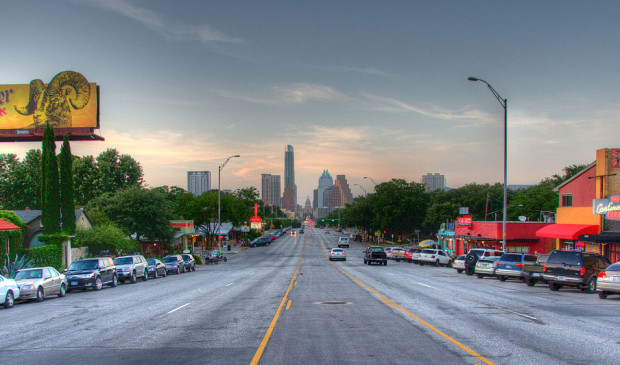Neighborhood team scrutiny moves forward
Friday, October 2, 2015 by
Jo Clifton With City Council Member Pio Renteria in the lead and several other Council members offering amendments, Council unanimously approved a resolution Thursday that will start the process for reining in any neighborhood teams – also known as contact teams – that might be failing transparency tests or discouraging participation by newcomers.
Renteria gave the longest speech of his short career on Council, trying to reassure some worried members of neighborhood teams that they would still be able to welcome members who do not live in their neighborhoods if they wanted to. He noted that he has been a member of the Cesar Chavez neighborhood team for the past 14 years and that the team welcomes people from a neighboring area, Holly, to their meetings.
Some neighborhood teams will not allow people to participate in their meetings unless they have lived in the neighborhood for five years, Renteria said, and the city does not have the authority to tell those teams that they must change their rules. “That’s what we’re trying to fix. I just want everybody to have a voice,” he said.
The resolution includes a directive to the city manager to solicit input from various stakeholders, including neighborhood team members, neighborhood residents and neighborhood associations.
The resolution states that the city manager should initiate code amendments to the Land Development Code “to add oversight and compliance requirements for contact teams.” That oversight should include the city’s authority “to formally recognize a neighborhood team for a specific planning area and to require that the neighborhood team bylaws comply with the spirit of” a uniform template.
According to the resolution, the code amendments would include “a fair process for the city to rescind recognition of a contact team if it does not comply” with city requirements. That means that the neighborhood teams must ensure that official meetings are open to the public and are held in a place that is accessible to the public.
Additionally, staff is directed to come up with “a fair process to handle community-initiated grievances” about neighborhood teams. Currently there is no such process. If there are complaints about a team’s behavior, the city can do nothing.
The fact that the item passed unanimously does not mean there was no controversy.
Mary Ingle, president of the Austin Neighborhoods Council, told Council that taking action would be “premature. It seems like it’s to settle a dispute with one neighborhood contact team,” she said, referring to the Montopolis neighborhood team. But no one from that team came to Thursday’s meeting, although members had attended last week’s Council committee meeting to complain.
After the item was approved, Ingle told the Austin Monitor that the reason for the resolution was an ongoing argument between Renteria and his sister, Susana Almanza, along with her friend, Daniel Llanes. “And this is no way to do it. What you do is you go to mediation, and he doesn’t want to do it,” Ingle said, referring to Renteria. Almanza came in second in the election for the District 3 Council seat last November.
Sara Torres and Ana Aguirre, who both said they live in Southeast Austin and are part of their neighborhood team, expressed concern about whether they would have to rewrite their bylaws to conform to the uniform template. Council Member Greg Casar added words relating to the “spirit of the template” in an apparent nod to those concerns.
City Auditor Corrie Stokes said her office is currently designing an audit looking at the “neighborhood-planning communication process and public engagement efforts involved with neighborhood planning.” She said one reason her office is proposing the audit “is looking forward to CodeNEXT to see whether we have the mechanisms to communicate from us to teams and from teams to neighborhoods.”
In response to questions from Council, Stokes said there would be no conflict between her audit and initiation of the code amendment. After public meetings about the proposed code amendment, staff is directed to bring the matter before the Planning Commission for a hearing and then to the Council Planning and Neighborhoods Committee, with recommendations to the full Council “within 120 days.”
Currently, there are 31 neighborhood teams, covering just less than 50 percent of Austin’s population.
“SoCo” photo by Justin Jensen – SoCo. Licensed under CC BY 2.0 via Commons.
You're a community leader
And we’re honored you look to us for serious, in-depth news. You know a strong community needs local and dedicated watchdog reporting. We’re here for you and that won’t change. Now will you take the powerful next step and support our nonprofit news organization?






